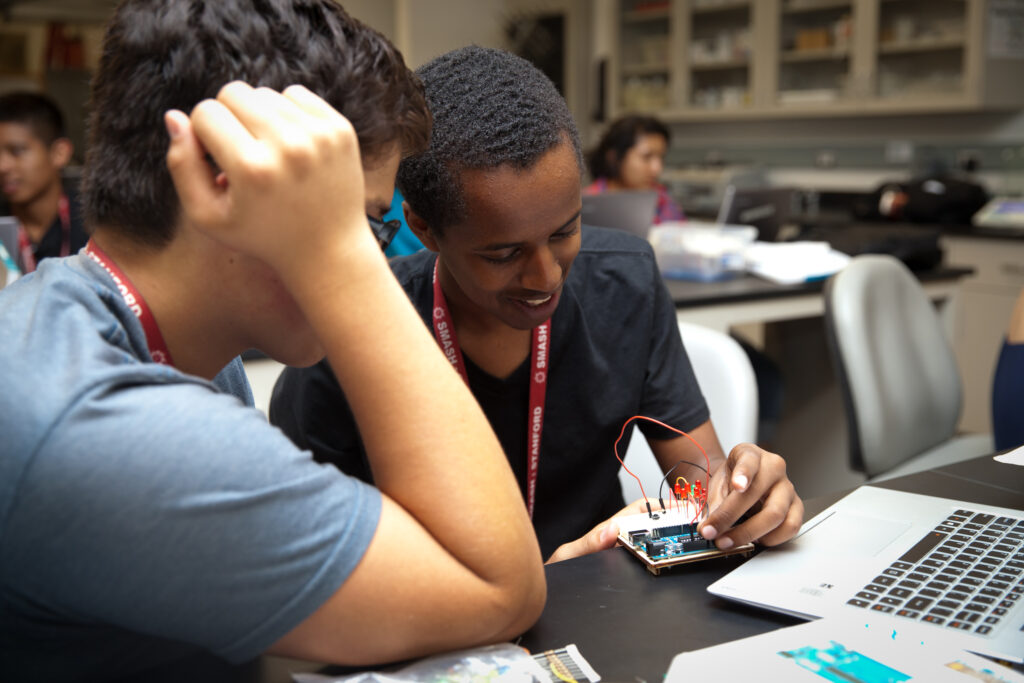Total Physical Response

Bloom's Level
Use
Setting
Activity
Technology
Related Strategies
Description
Total Physical Response (TPR) is a language and vocabulary development strategy that connects language and action to support comprehension and improve recall. TPR is based on how babies learn their first language through observing speech paired with action. Students associate body movements, facial expressions, or actions with specific words, phrases, or statements to build and demonstrate comprehension. When using TPR, teachers should thoughtfully choose language that can be enacted and avoid abstract concepts and terms. Teachers should also model the strategy for students. Introducing language using TPR typically begins with speech and movement before adding written words. Although teachers often create movements for students to repeat when introducing new language, students can also create movements to represent the target language and vocabulary.
When To Use It
As a learning strategy, use TPR when you want students to:
- acquire and retain new vocabulary words
- improve language develop
- use a kinesthetic strategy to build understanding
As an instructional strategy, use TPR when you want to:
- introduce and demonstrate the meaning of vocabulary terms through movement
- use a multi-modal strategy to meet the needs of diverse learners
- engage all students in the learning activity
How To Use It
Advance Prep
- Consider your learning objectives and identify a relevant list of vocabulary words that can be represented by physical action.
- Create a physical movement or action to represent each word. You may include gestures, facial expressions, and body movements. You may want to practice the movements in front of a mirror to refine them.
- Plan to model the strategy by saying the word (or phrase) and then enacting the physical movement that represents it.
Implementation
- Introduce the activity by explaining to students that they will learn the meaning of words through movement.
- Say the word or phrase. Do not write it at this time.
- Act out the word or perform the physical movement that represents its meaning.
- Ask the whole class to say the word and mimic the same physical movement.
- Write the word for all students to see so they can associate it with the spoken word and movement.
- Have students review the word by repeating and performing the action.
- Repeat this sequence (say the word, perform the movement, see or write the word) for each new term.
There are various adaptations and activities for the TPR strategy, such as adding props and pictures, having students create their own movements, and showing the written word and definition along with speaking and performing the action.
Repetition is key to TPR. Have students practice by presenting the word orally and then having them perform the action, or perform the action and then have students say the word. Rotate between 3-7 words new words at a time.
Pros
- improves recall of words and definitions
- engages students through physical movement
- reduces anxiety for students who are reluctant to perform in front of others
- multi-modal and meets the needs of diverse learners
Cons
- not effective for all types of vocabulary terms, such as abstract concepts
- students with limited mobility may not be able to participate fully
Culturally Responsive Application
When students create movements to represent the meaning of vocabulary words, they take ownership of their learning. Total Physical Response supports a culturally responsive approach because students can make meaningful connections to words in ways that make the most sense to them. In addition, because TPR combines visual cues, physical action, and auditory and verbal communication, it can meet the needs of diverse learners, improving vocabulary acquisition for all students.
Emerging English Language Support
Supports the learning styles and needs of many different learners on many different levels, especially in the areas of vocabulary and language acquisition.
Students with Disabilities Support
TPR allows struggling learners time and ample opportunities for physical activity, repetition of content/concepts, and mirroring of others, all of which improve outcomes for struggling learners. Mirror others reduce anxiety and the chances of embarrassment for students who struggle to respond in front of others.
Subjects
1.6 Language, 2.1 K-8 mathematics
- ABOUT US
- AREAS OF FOCUS
- Equity in CS EducationAdvancing access and equity in K-12 computer science education
- Inclusive Pathways to TechSupporting inclusive and alternative pathways to tech jobs
- Diversifying Entrepreneurship & VCInvesting in gap-closing companies and funds
- Equitable Tech PolicyAdvancing policy, regulation, and accountability to drive systemic change
- PUBLICATIONS
- RESPONSIBLE AI
- RESOURCES